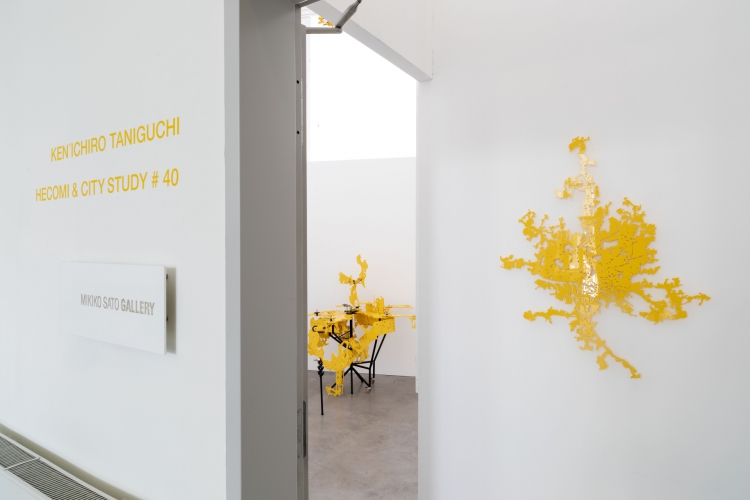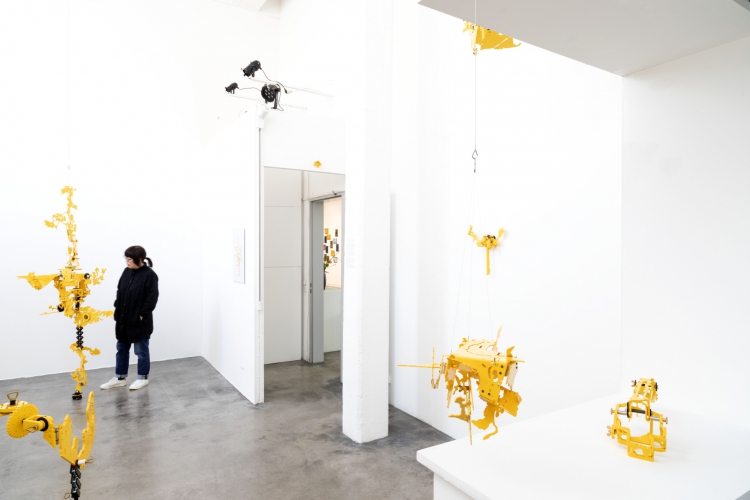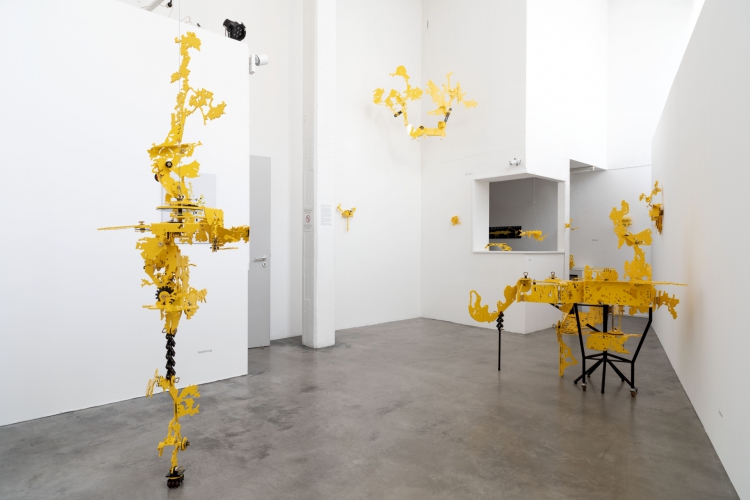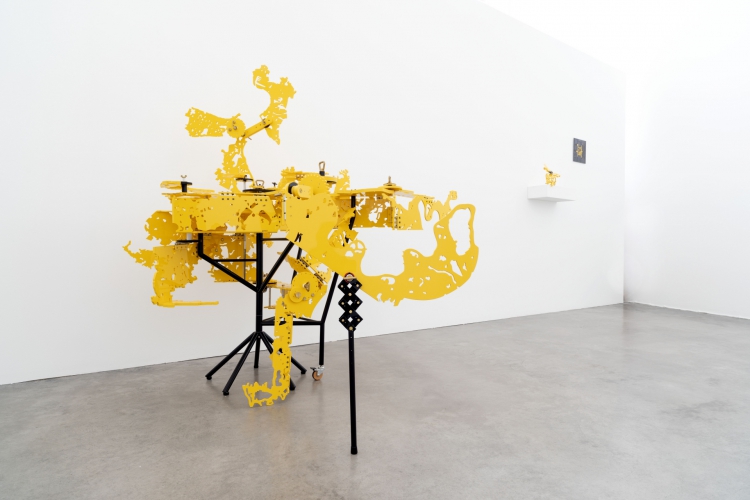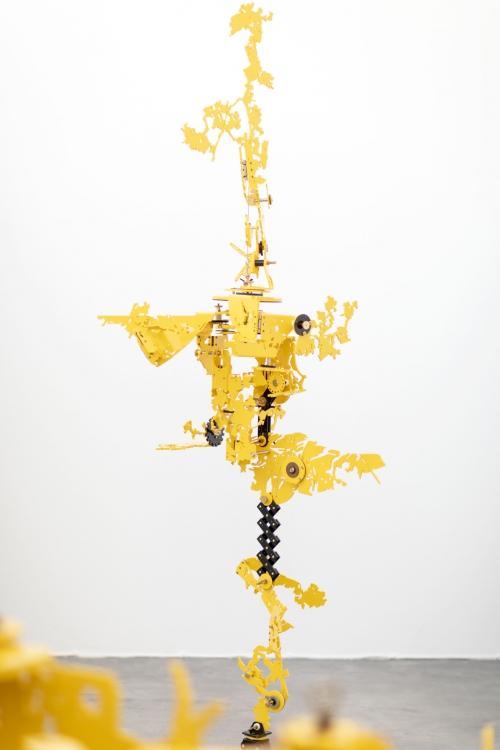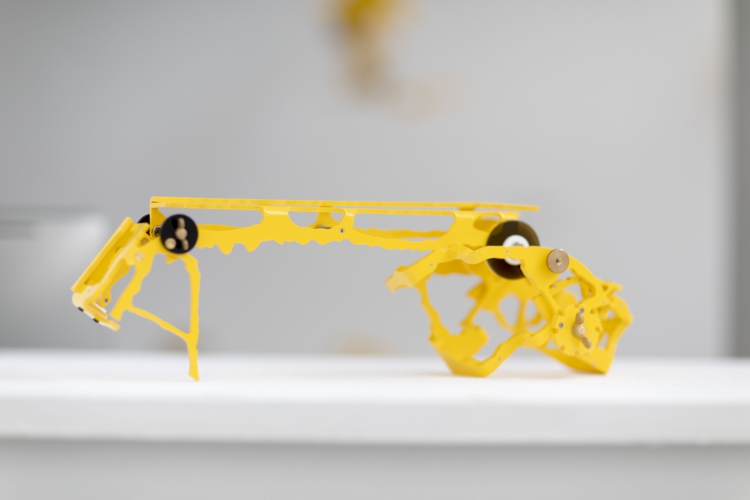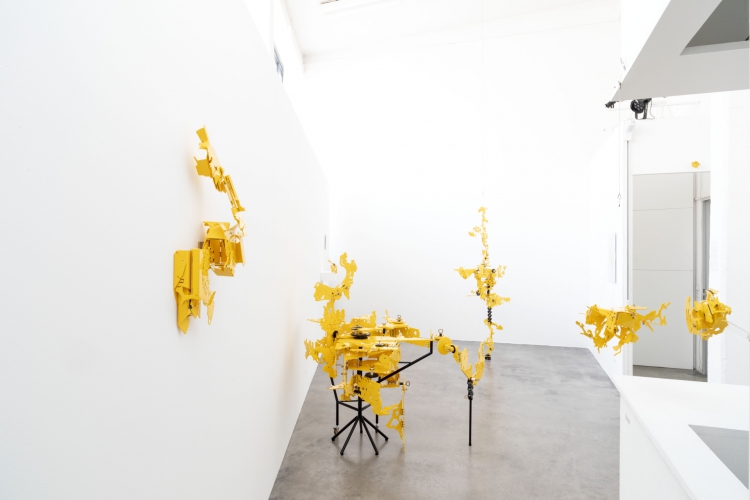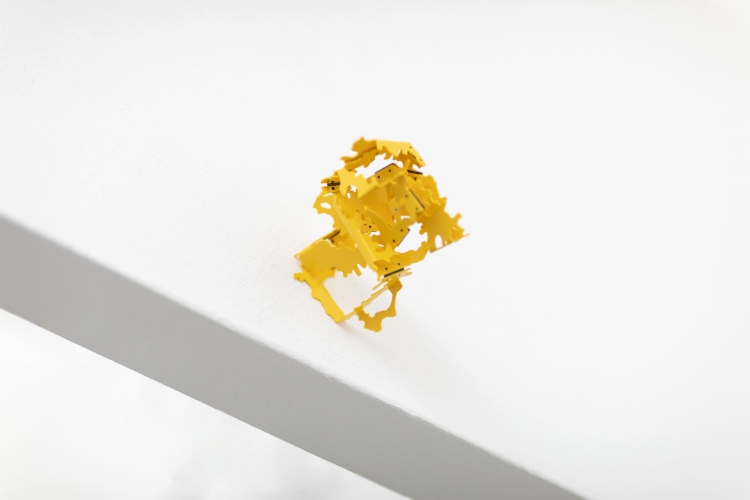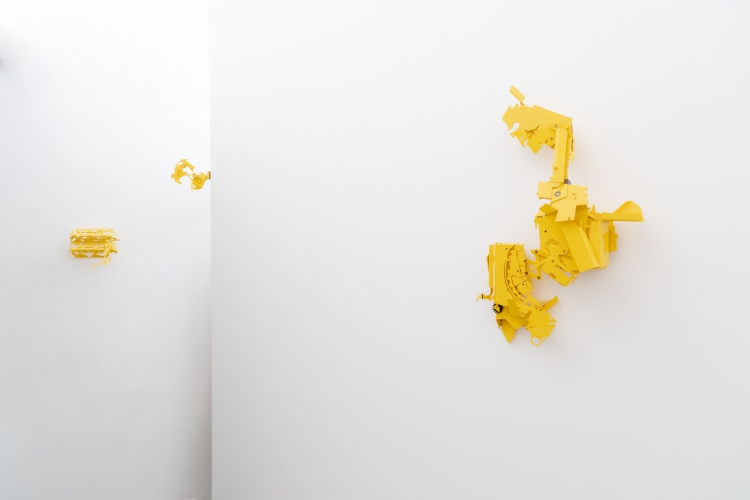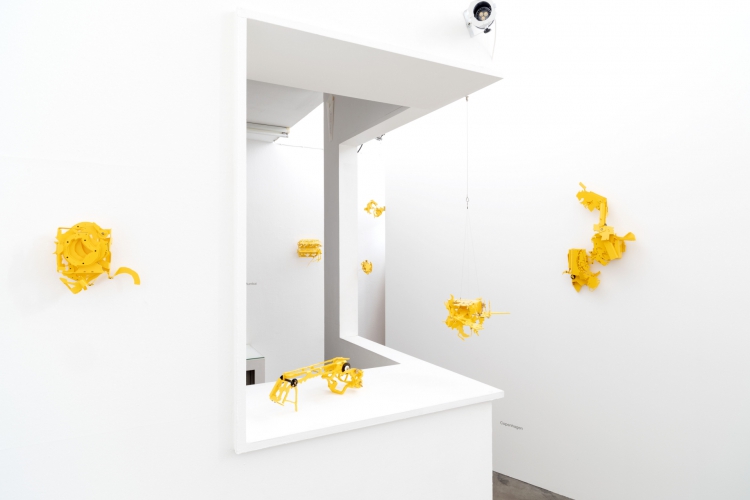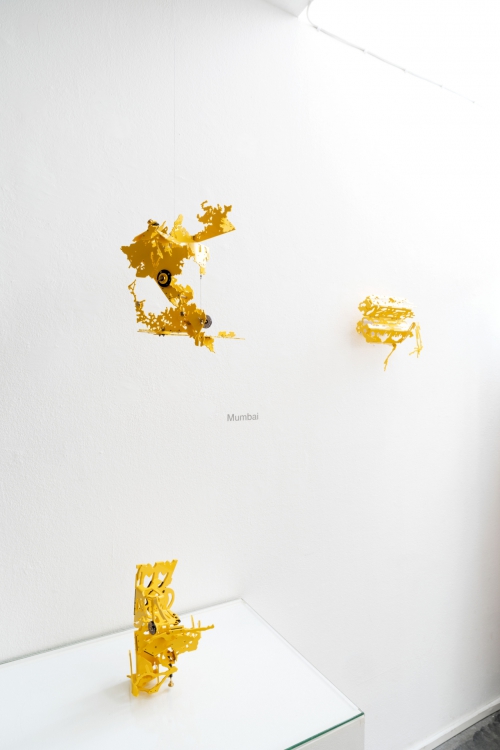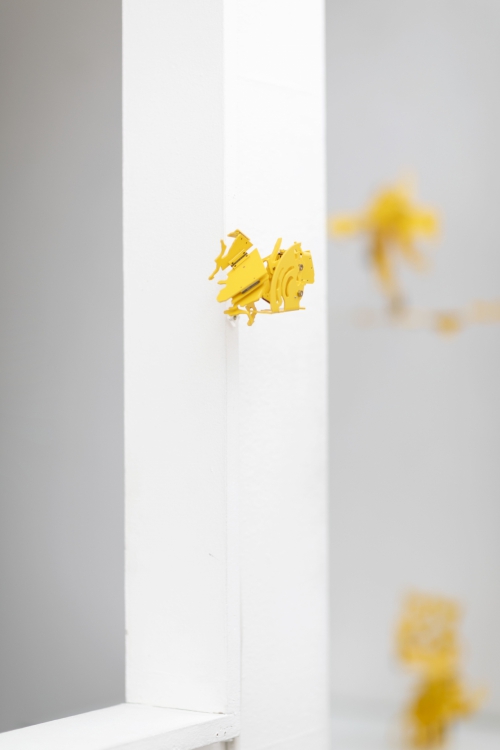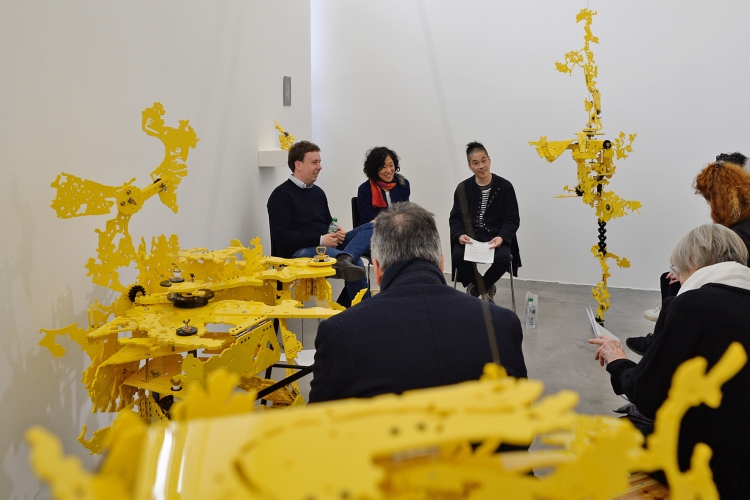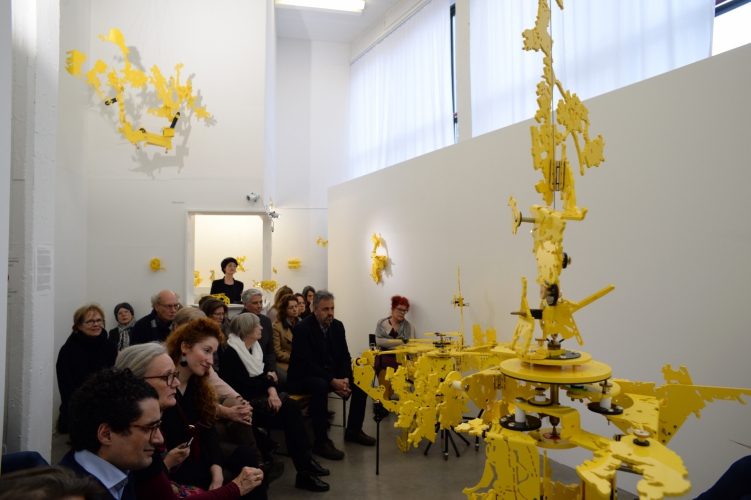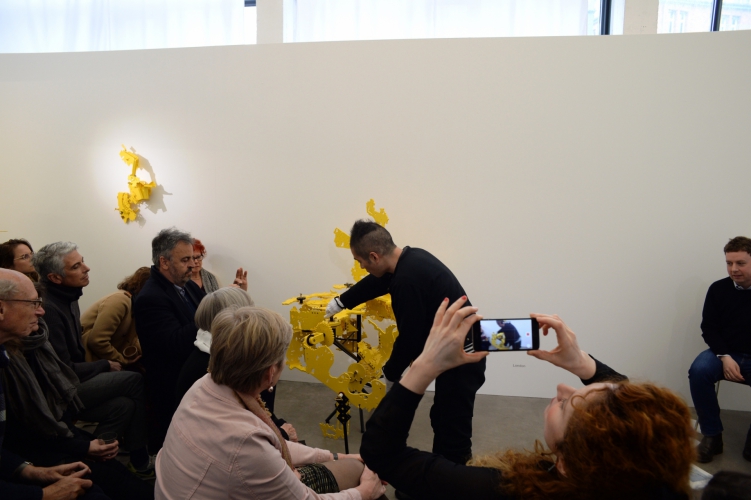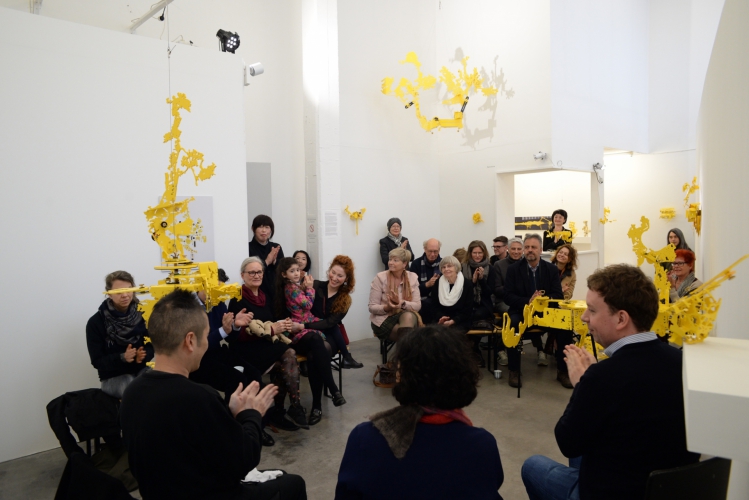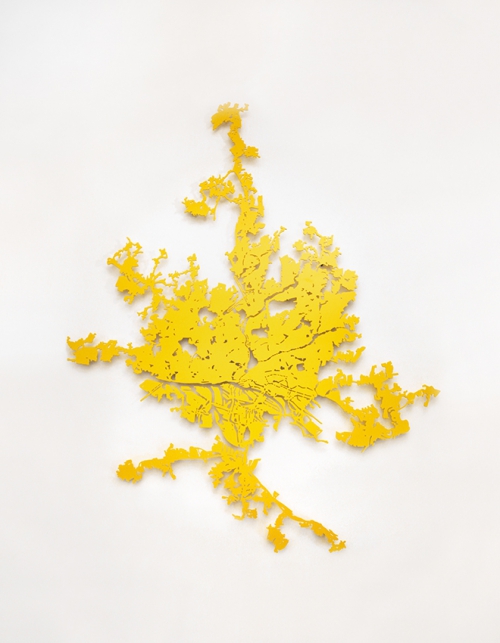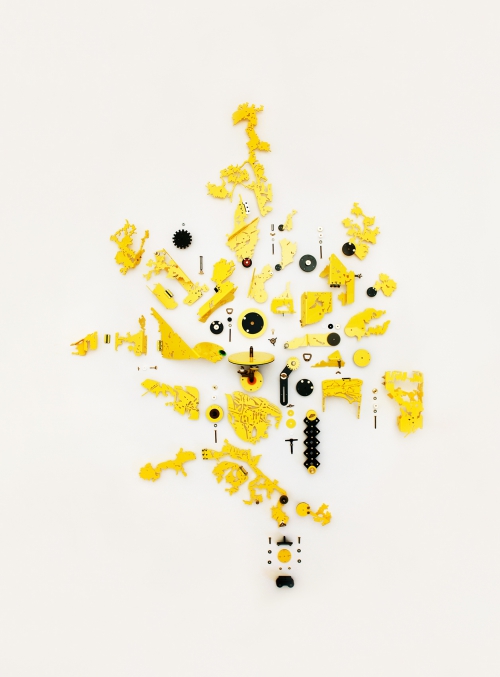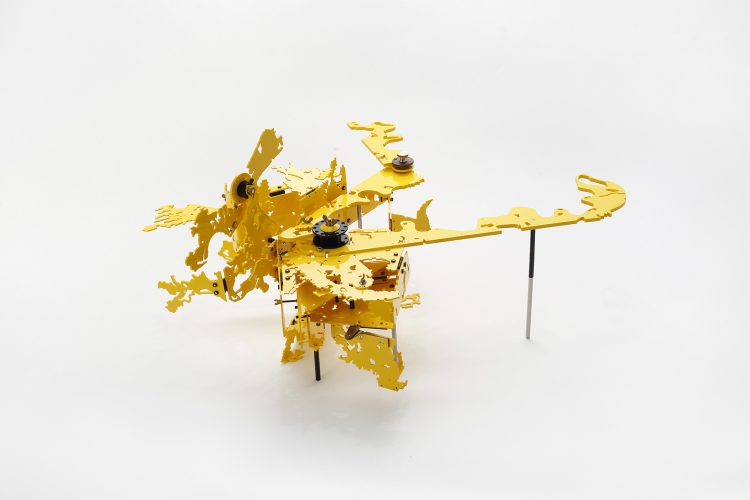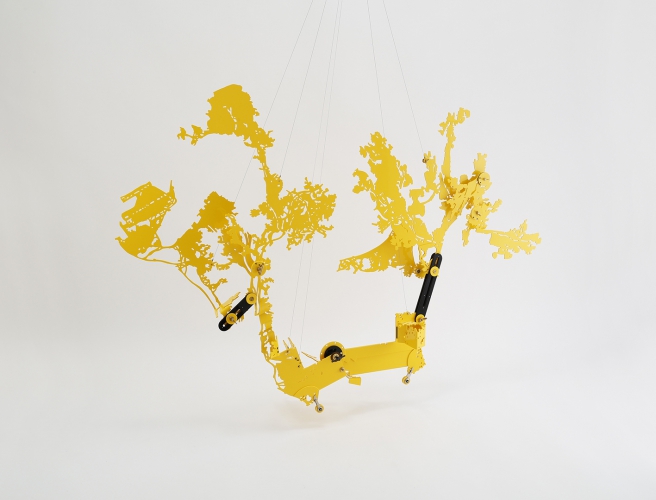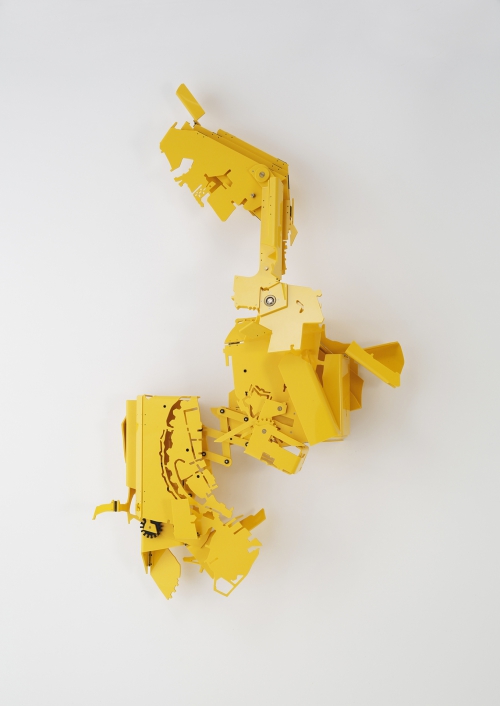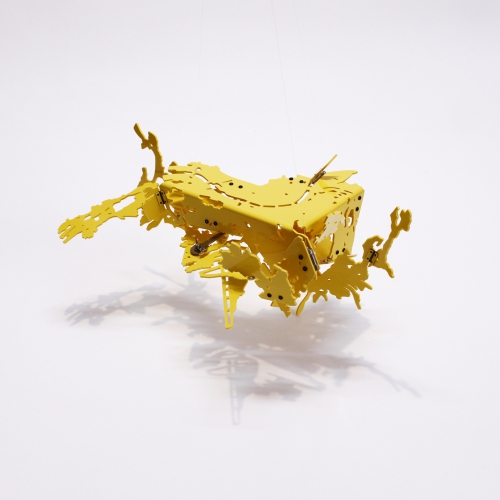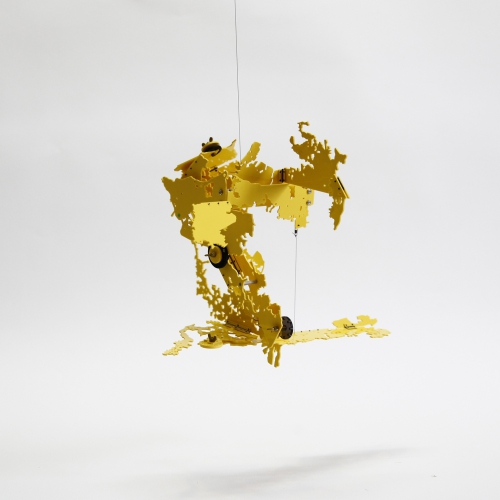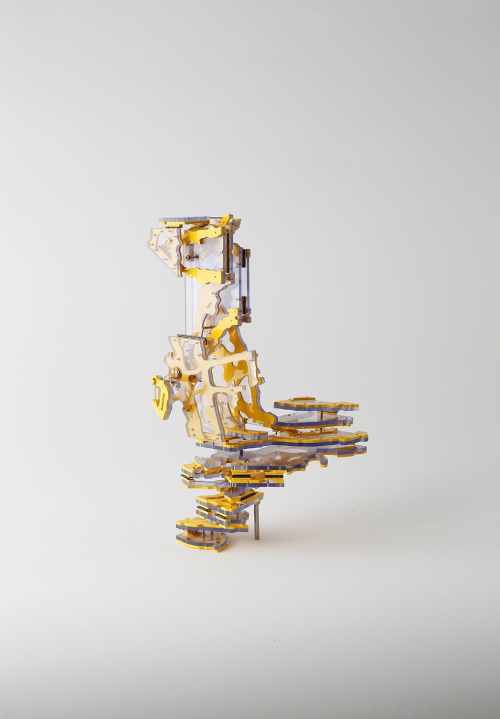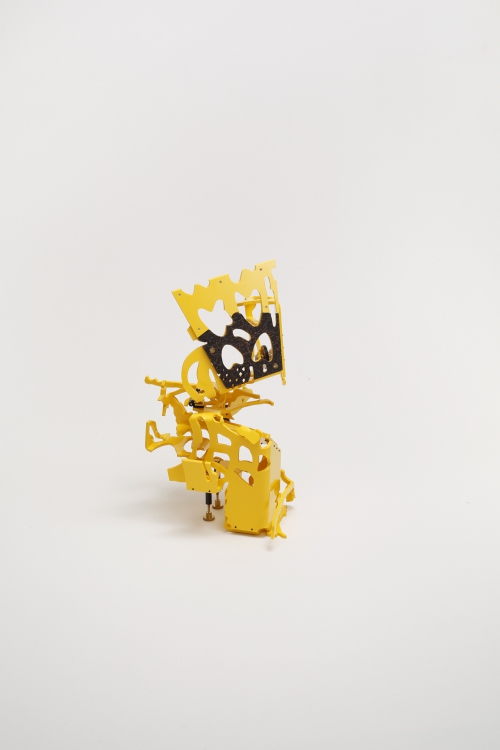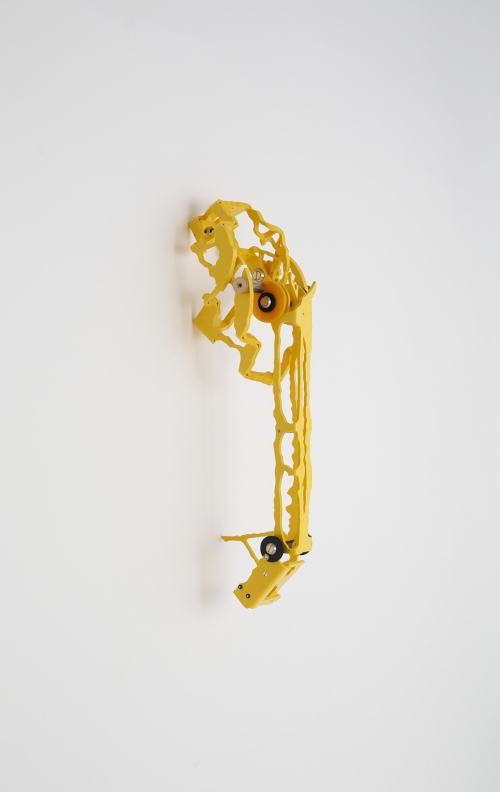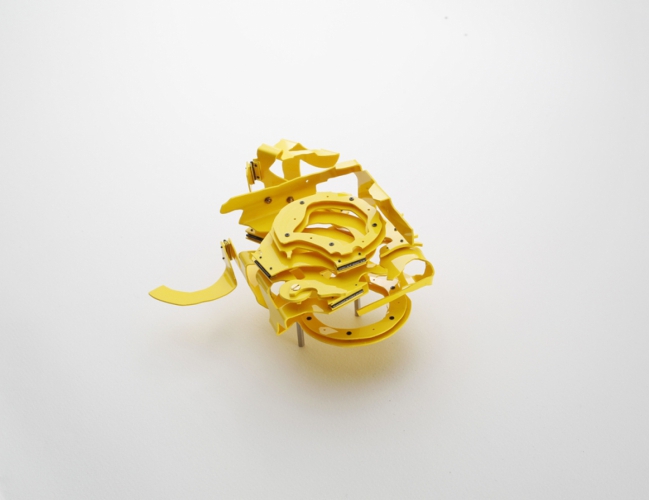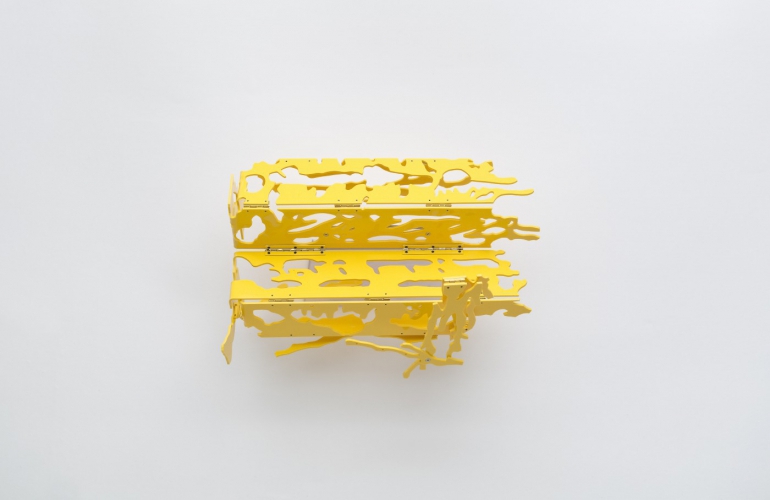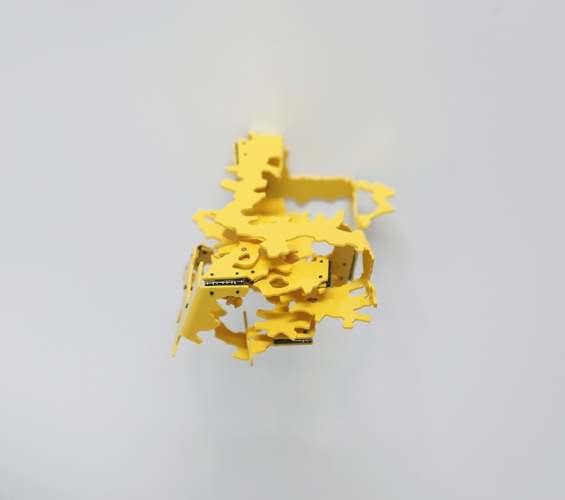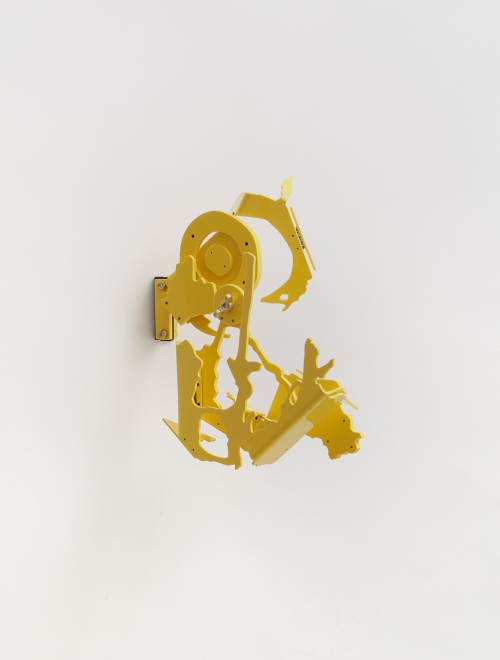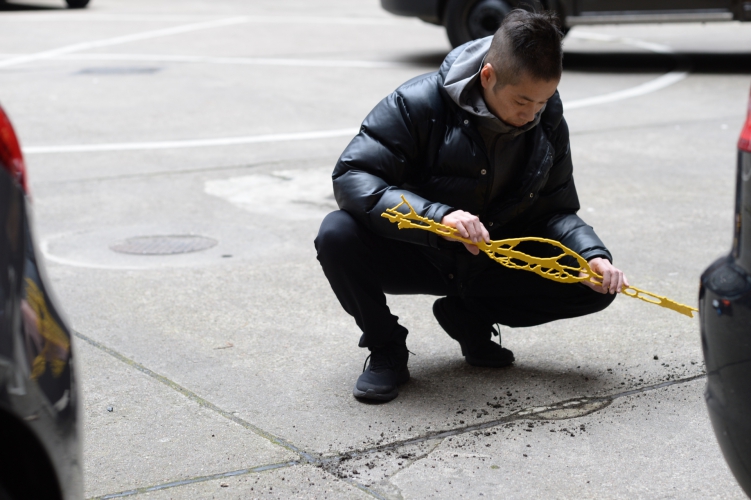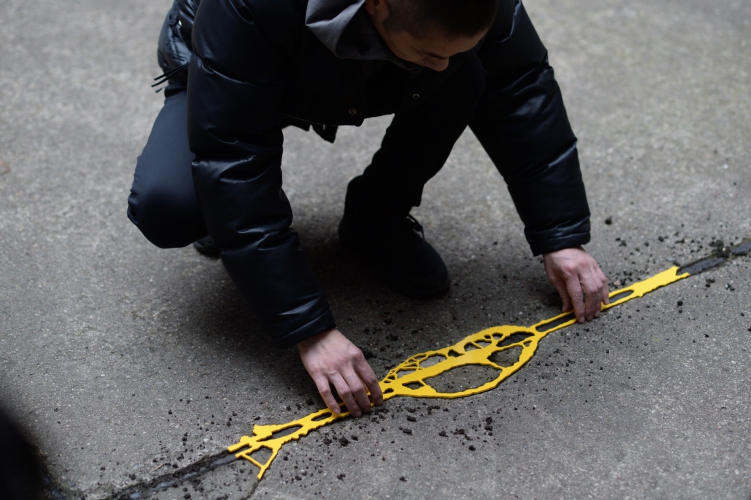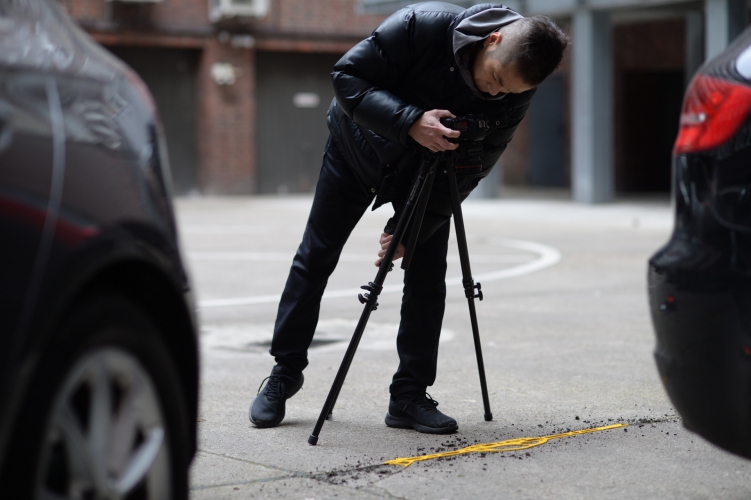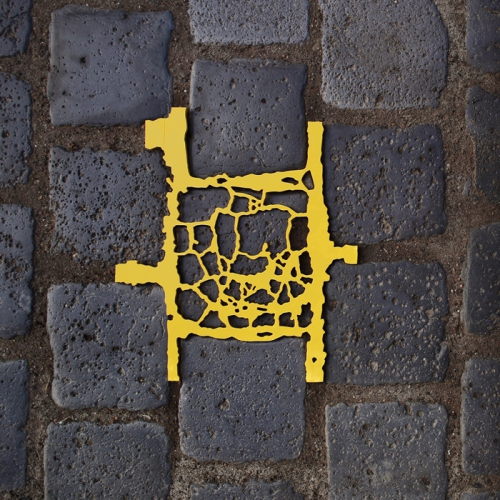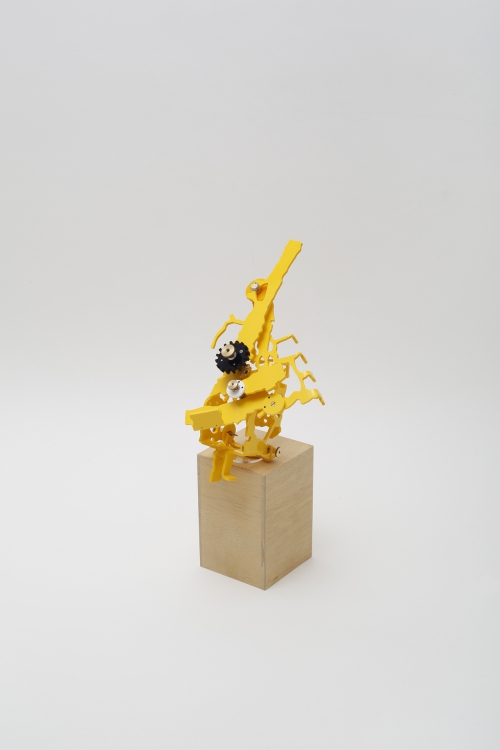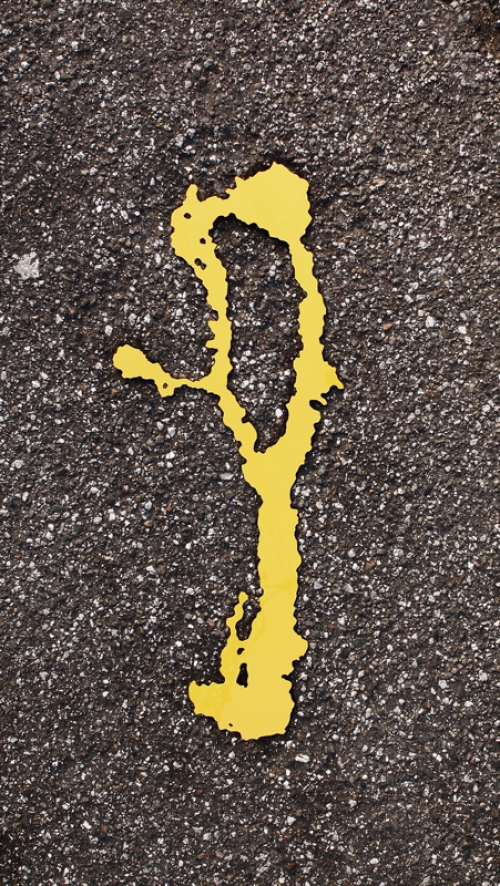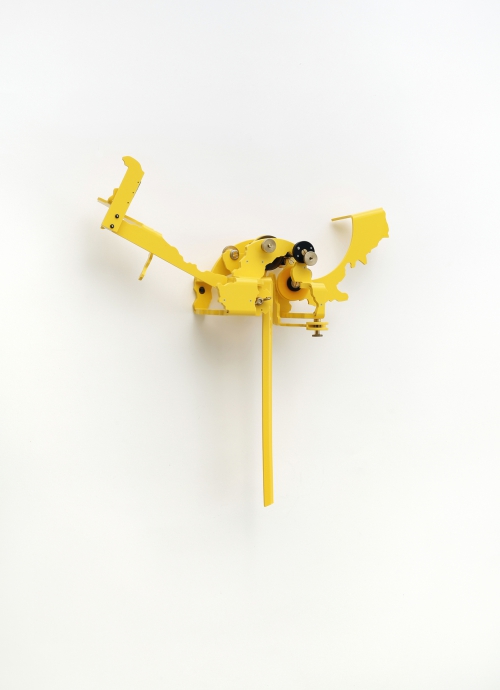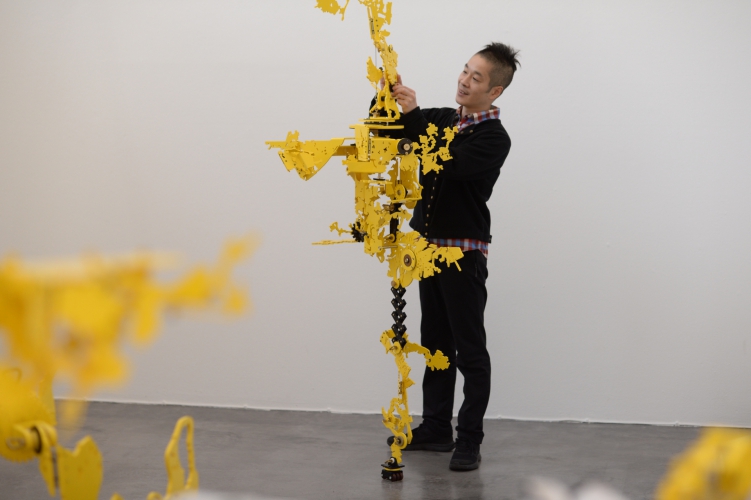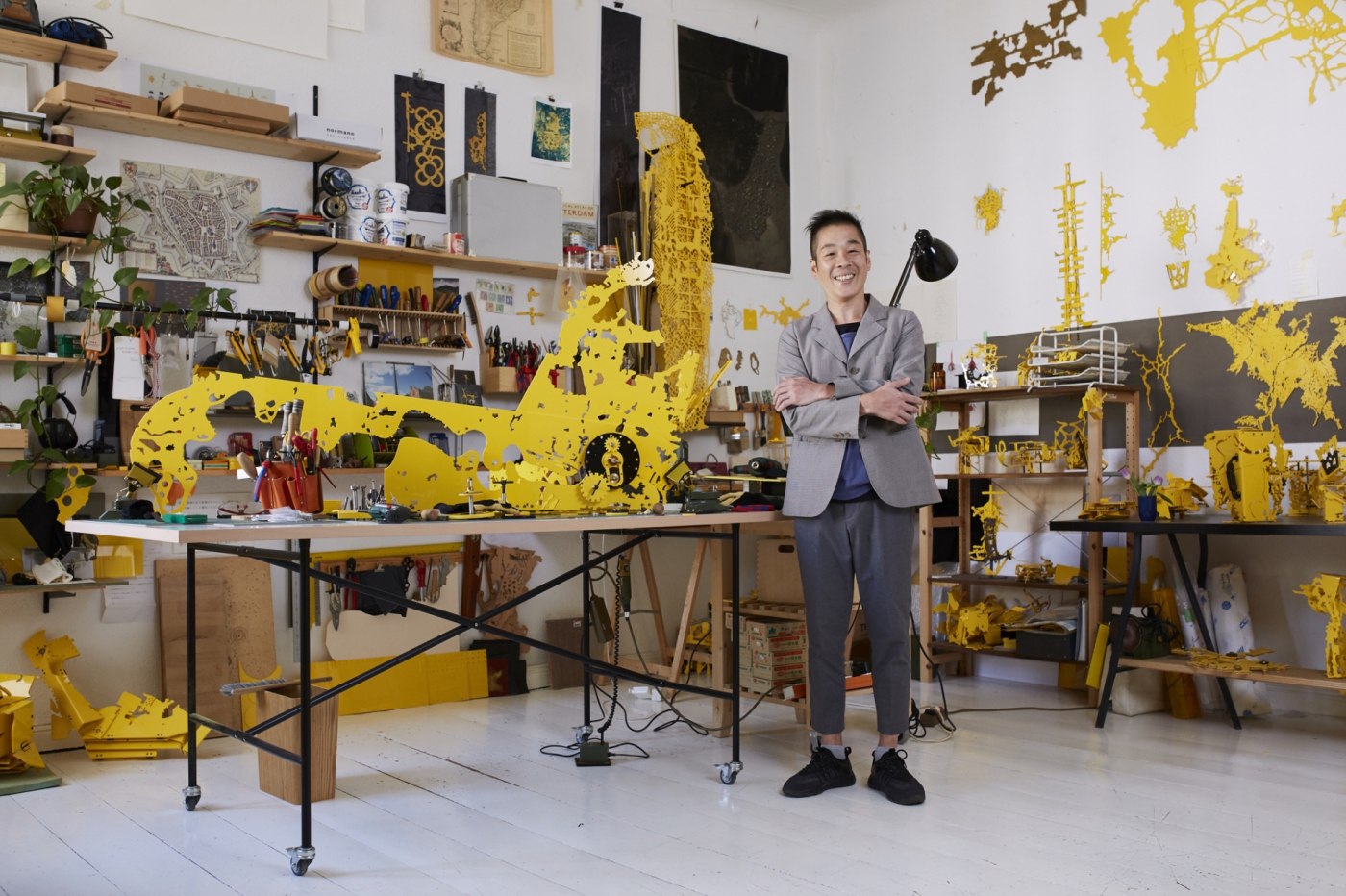
23.03. — 18.05.2019
Ken'ichiro Taniguchi - HECOMI & CITY STUDY #40
OPENING: FR, MARCH 22, 2019, 6PM
Recognizing a sculpture in the maze of lines
A map shows a section of an area. However, it does not only have to provide navigational information like a road map. A map can also show railway tracks, underground geological breaks or cellular networks. A map is always more than just a navigation device. The lineaments of a map also give a sort of synopsis. They invite you to imaginary journeys.
Ken'ichiro Taniguchi was born in 1976 in Sapporo and has been living in Berlin since 2006. He got familiar with these fantastic journeys through symbols on paper from an early age because his father was a geologist and always had plenty of maps in the house. His virtual walks eventually became reality, but the search for stimulating cartography remained: Since 2000 Taniguchi is working on his "Hecomi project" for which he continuously searches for the secret writing of damaged walls, erosion cracks, material fractions and small signs of fatigue on walls and floors worldwide from which he develops his art objects. Some of the accidental ruptures are reminiscent of roads or cobwebs, bony structures or micro images of amoebae. Leonardo da Vinci advised in his treatise on painting to be inspired by cracked and blotched walls, which could evoke figures, landscapes, or even rider battles in the artist's mind. What was used as a stimulus in the Renaissance in the modern age then became the subject of the paintings of the Art Informal. To someone experienced in the art of Asian ideographic writing the implied scriptural qualities of a map may be especially interesting.
During his search for new inspiring forms Ken'ichiro Taniguchi creates an atlas of his finds with the locations of the “Hecomi-Studies”. In a controlled appropriation of chance he cuts by hand some of these random forms from mostly yellow PVC. Just how extremely accurately cut these objects are can be seen in films and photographs that document so-called hecomi-fittings. In these fittings the bright yellow objects are placed into the original cracks. In old Japan broken porcelain was repaired with gold so as to highlight the history of the object. The yellow sculptures vaguely resemble these golden lines yet they are autonomous. They seem almost like a magical healing of the many small injuries of the historic urban space.
But aren't today's cities nothing but injuries to nature, breaks from their natural surrounding environment? At least on aerial photography it may seems like that. Ken'ichiro Taniguchi has been capturing the lines of human agglomerations around the world for some years with the help of bird's eye maps. He does not care about the road network. He draws the much more complicated borders between cultivated and undeveloped green areas. Only rivers may appear as a historical framework of the places. Again, the traced shapes are copied onto PVC, cut out and connected with hinges and thereby made foldable and manageable. The inspiring initial image has to become a new form. Ken'ichiro Taniguchi adopts the Japanese tradition of creating volumes through folding into his art and applies it until he has found a new sculptural form.
In the smaller handmade models, but even more so in the large industrial size work made out of carbon and stainless steel (e.g. for the Sapporo Community Plaza) the sculptures’ forms are completely new but as meta-signs of the cities remain identifiable to the inhabitants of the city. And since every city is different, there is a secret quintessence of structure in the individual “Hecomi-studies”, a formal language that the flâneur once experienced while walking through the city and in future might be recognized on earth by the space tourist.
- Hajo Schiff
